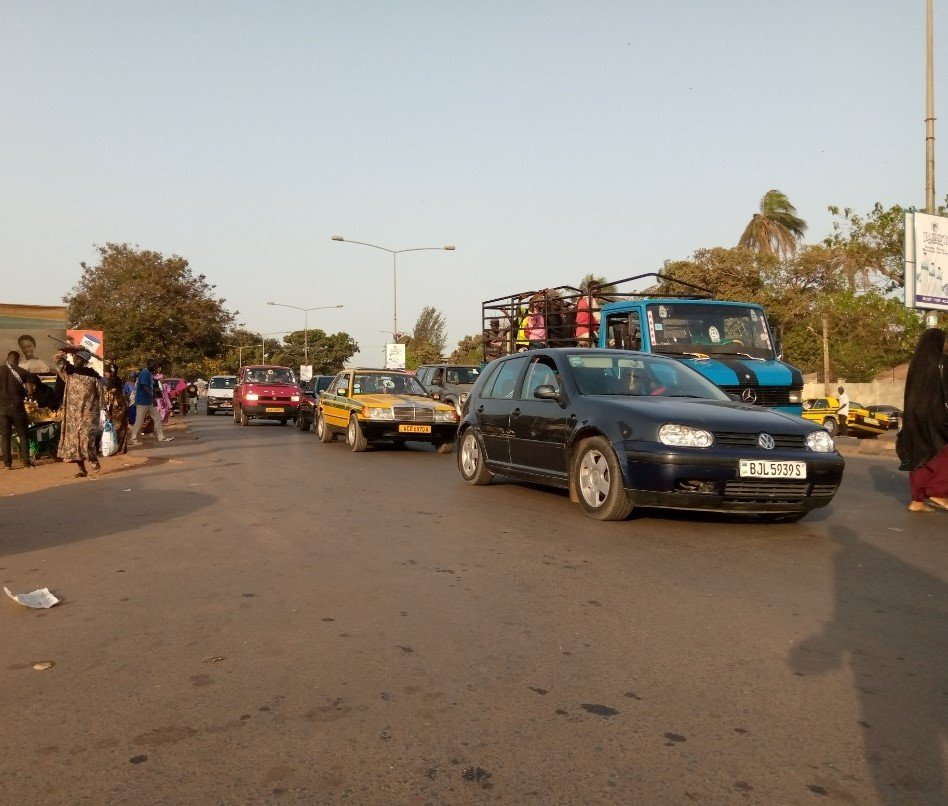
By Malick Nyang
Traffic jams in urban Gambia are becoming a growing nightmare to commuters who travel long distances to and from work on a daily basis.
With drivers increasing the fare at their own discretion, school-going children who travel on the same major roads to and from their respective schools are also largely affected by delays in traffic.
Isatou Badjie, a Brikama Jamisa resident who works at Smart Technologies along Kairaba Avenue, prepares to go to work every day at 5:40am. She does her obligation (pray) and early morning chores before leaving the house.
She leaves home as early as possible to avoid lateness, considering her place of residence and her workplace in Pipeline, Kanifing Municipality. However, leaving home at 6am is never a guarantee that she will reaching office early due to the unbearable traffic nightmare and hassle she faces daily.
A 15-20 minutes’ walk from her house in Brikama Jamisa gets her to the main Brikama road, where she stands looking at the 38 kilometer-stretch of a road that leads to The Gambian capital, Banjul.
She used to board a vehicle right from Jamisa to the Brikama car park but Isatou has to abandon this because she was committing more financial resources on a journey that should have been only three fares (D10 from Jamisa to the Brikama carpark, D25 from Brikama to Westfield, and D10 from Westfield to Pipeline).
However, too much fare partitioning, unapproved of course, by commercial drivers, means Isatou is forced to cut cost by trekking the distance from her house to the main highway (Jamisa to Jaliba Junction), to save money.
While on the highway, she walks few steps to the road and stretches her right-hand waiving at every commercial vehicle that nears, but they do not stop – they are full.
Most commercial vehicles plying this road cut the journey into three or four parts, collecting more fares than the government-approved one-way fare to and from Banjul.
Frustrating Experience
Isatou is usually not alone in the scramble for vehicles during the urban rush hours. No matter how early she found herself on the highway, she will find other commuters from various walks of life on the highway, and together, they scramble for vehicles.
“It is a frustrating experience, and I have to go through this stress every day,” she said.
After several minutes of waiving, Isatou is ‘lucky’ to at least have a sprinter, a 22-seat Mercedes van, that goes to Lamin and later to Latrikunda – just more than half way to her destination. The commercial drivers are the kings of the road, not the police, not The Gambia Transport Union and not even the government.
“The drivers decide where they go and what they charge, going against the approved fares established by the government and the transport union,” she said. “This makes them kings on the road.”
The mother of one (a boy, aged 3) is forced to alight from the vehicle because the driver has decided to cut what was supposed to be a straight route to the capital into 4, demanding that passengers pay fares at every major stop: from Brikama to Lamin, Lamin to Latrikunda, Latrikunda to Westfield, and Westfield to Banjul.
On the way to Latrikunda, Isatou pays D25 fare which is the approved amount from Brikama to Westfield, and she hasn’t even reached Westfield yet.
With the fare partitioning, split journeys, and traffic jams in Farato, Busumbala, Yundum, and Lamin NTC, Isatou spends more than one hour on the road before reaching Latrikunda – where there is usually a traffic jam, too.
“The nightmare journey does not end in Latrikunda, but it is the second and most difficult episode,” she said.
The young resilient woman has to scramble for another vehicle to go to Westfield. In most cases, the commercial vans will prefer going to Serrekunda. However, having struggled for some time, she finally hops into another van going to Westfield. She is not challenged only by the fare she has to pay again but the more congested traffic she faces up to Westfield.
At Westfield, Isatou takes a taxi to her work place in Pipeline, and despite waking up early for a journey to work that should have lasted at most 30 minutes or less, she arrived late – a few minutes after 9 o’clock.
The office cleaner knows that staying in office until the normal closing time (5pm) will introduce her to an unbearable way back home – fare partitioning and a one-way journey cut into three or four parts.
And unavoidably, she sometimes has to leave office before time, providing that she finishes her work for the day. “On average, I spend nothing less than D100 a day on fares only,” she said of a journey that should have cost D70 to and from work. “If things are hard, I will have to spend nearly D150 or more daily on fares.”
Entire Salary on Fares
Economically, statistics show that nearly half of The Gambian population are living below the poverty line of $1.25 dollars a day, according to data from the Gambia Bureau of Statistics, GBoS.
With an average salary at D2500 ($50) per month and an optimal basic salary for most Gambians at around D7000 ($140), one living in Brikama will spend almost all her salary on fares alone.
Isatou’s situation is much harder as the demands at home are much higher than her earnings (D3500 a month) as a Cleaner. She has responsibilities to contribute to the electricity and water bills, feeding, healthcare needs and other necessities. With drivers increasing the fare at their own will, sometimes, Isatou may not trust her wallet but rather looks for a lift than to board a commercial vehicle.
In relation to the fare increment, the Gambia Transport Union (GTU) in consultation with government and other relevant stakeholders approved 5% fare increment due to the rise in fuel price.
However, commercial drivers further increased the fares to the detriment of the commuters.
For example: Brikama to Westfield which used to be D18 is increased to D23 by government but the drivers added two dalasi to make it D25 (50 cents); and Westfield to Coastal Road which was D10 is increased to D15, commercial drivers now charge D20.
This is not helping Isatou and other working-class citizens. In order to curb the difficulty on the traffic, Isatou Badjie recommends that the government needs to provide a viable public transport system that would cater for commuters like her.
“The traffic is already congested, it is therefore better to face one challenge (high transport fares) than two (high fares and traffic congestion),” she said. “It will be wise to also have trucks ply the roads at night only in order to lessen the traffic jams.”
Route Licensing Scheme
An effective route licensing scheme for commercial vehicles was expected to reduce the hardship faced by passengers on our roads.
In March, 2022, the Ministry of Transport announced in a press release that it was introducing a route licensing scheme.
“The scheme shall apply to commercial vehicles that are licensed to carry ten (10) passengers and above. Any vehicle that plies these routes and falls under the above categories of vehicles should register for one route with the Ministry’s officials who will be going around the designated destinations (Banjul, Serekunda, Bakoteh, former Tippa Garage, Brusubi, Coastal Road, and Brikama).
“It is important to note that any vehicle that does not register for one of the above routes cannot ply the routes. Drivers who fail to register for a route and want to ply will not be allowed.”
This new system was to launch on 4th April, 2022. However, since then, there has been no changes or improvements with traffic jams or passenger services. The pilot project is nonexistent.
In the spirit of resilience and optimism, Isatou is hopeful that the traffic nightmare will be something of the past someday, despite the fact that the government seems to lack ideas on how to fix this particular problem.
A government promise to increase salaries does very little to curb high transport fares in the face of rising food, housing, medical and educational costs.
Despite the uncertainties, Isatou is “hopeful” that the pains and sufferings that commuters go through on a daily basis to and from work will come to an end one day.













